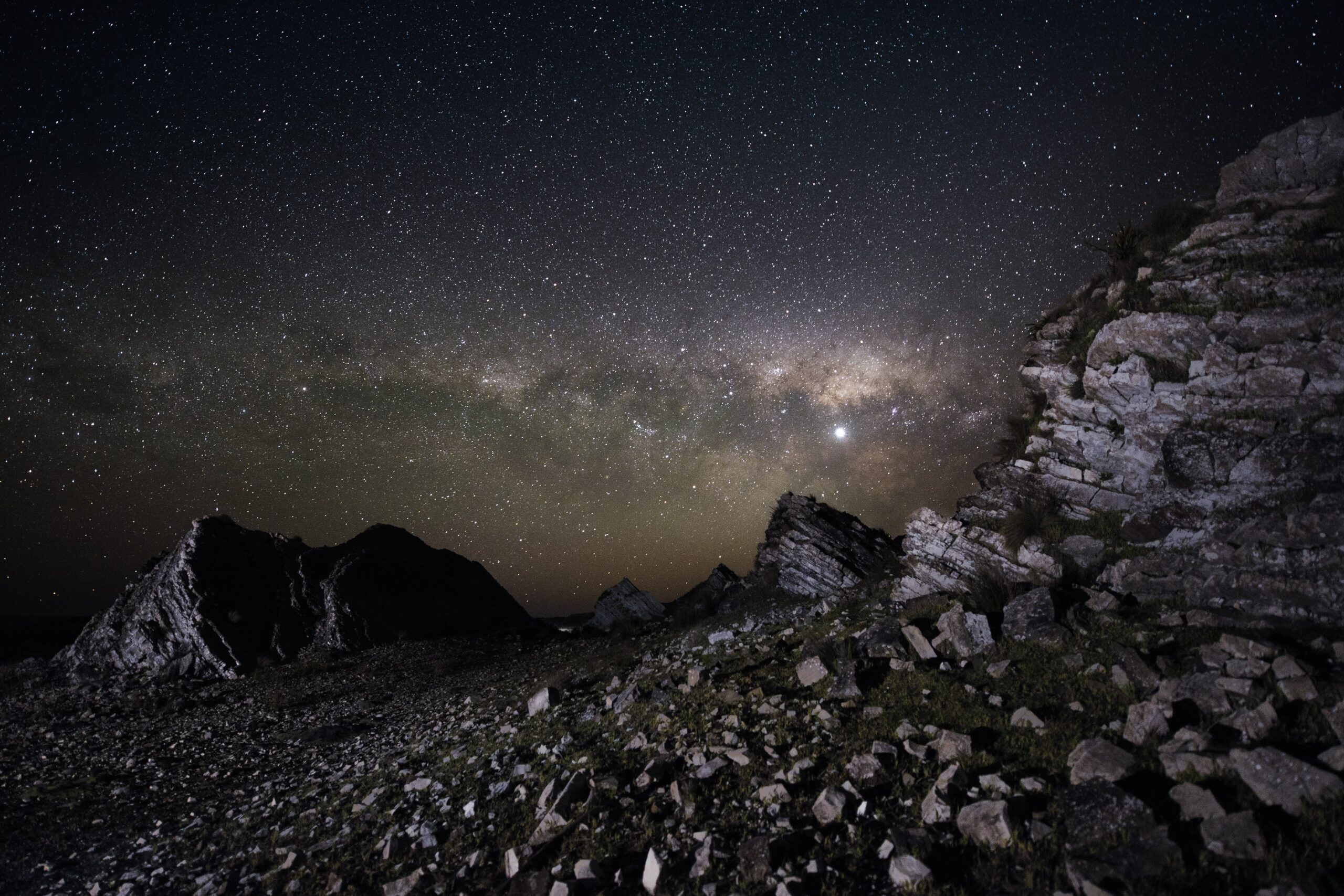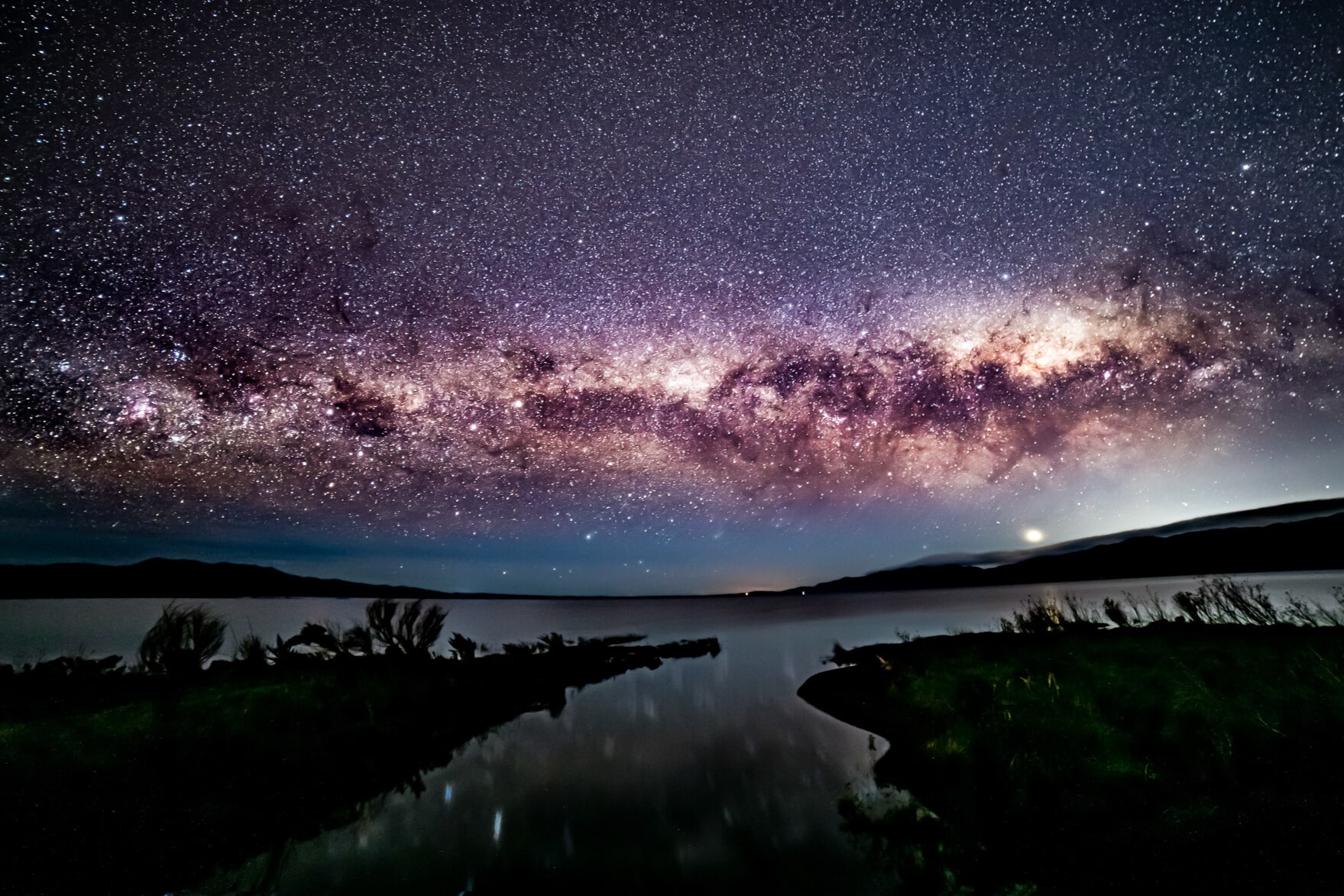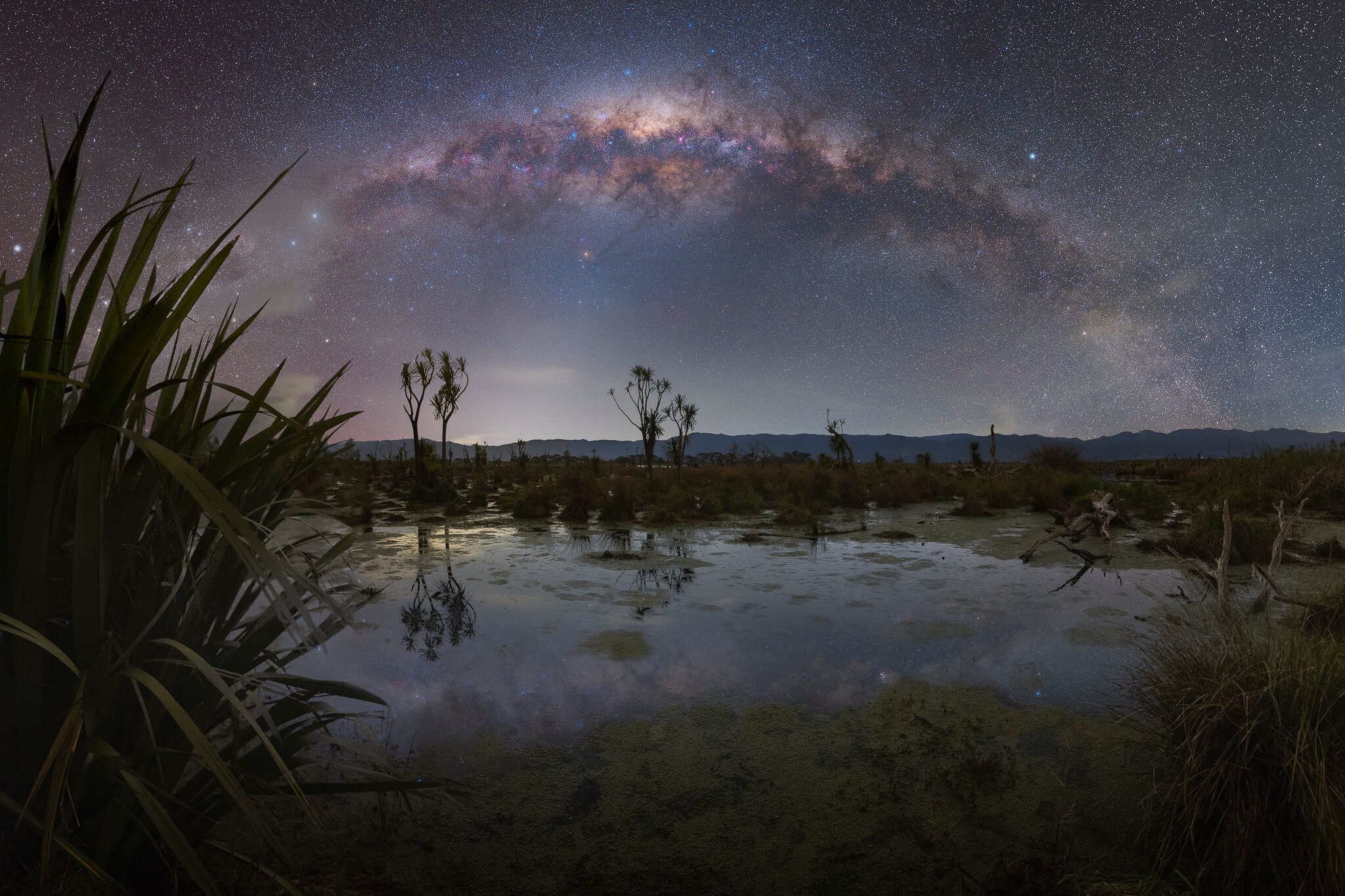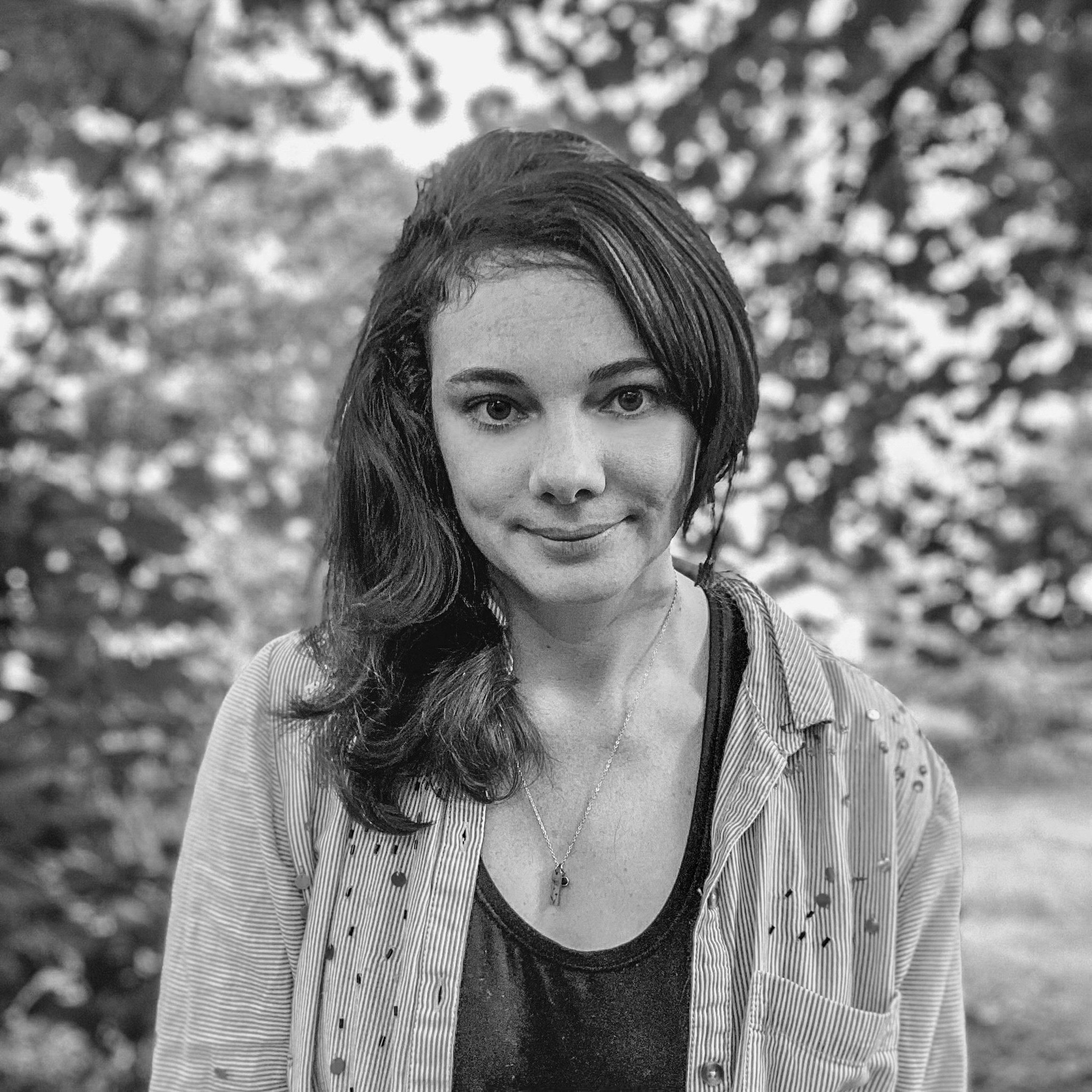NORTH STARS:
Climate Action
Certifications
Community Support
Wildlife & ecosystems
“Take a moment to think about it – people and local governments coming together to say we’re going to pass laws, we’re going to build in a way that protects nature.”

Night skies illuminate the Coastal Stairways landscape of the North Island. Courtesy of Wairarapa Dark Sky Reverse Association (Chris Murphy, Last Quarter Photography)
I’d tried to warn the guide. When confirming the stargazing session in New Zealand’s Wairarapa Dark Sky Reserve, I casually mentioned the booking was for an adult and a five-year-old. I repeated it the day before when giving directions to our holiday house. Still, when he arrived with red lights, a telescope, folding chairs, and warm blankets, he looked slightly unsure — bemused, even — at the bundle of energy darting around and pointing up at the stars.
The night sky has a way of stilling you, of quieting everything else — if you let it. It wasn’t long before my child stood in hushed awe, peering through the telescope. I didn’t know it then, but that July night, part of a road trip through New Zealand’s North Island, would become the highlight of our journey and subtly shift the way we live at home.
What Is a Dark Sky Reserve?
The Wairarapa Dark Sky Reserve in the southern part of North Island was officially established in January 2023, but the reserve had been years in the making. Dark sky reserves, of which there are only 21 in the world (although there are other dark sky places) are protected areas of land known for their night skies and minimal light pollution. They support astronomical observations, preserve natural night skies and the rhythms of nocturnal animals, promote public understanding of the natural world, and are simply a joy to experience.
In our increasingly hectic lives where we run from one activity to the next, or one screen to the next, dark sky reserves have the power to slow us down, look up, appreciate the natural world, and reconnect with nature and each other.
“You have the North Star — in our hemisphere, we have the Southern Cross,” Chris, the guide from Under The Stars, explained to my child who hung onto his words. It was a brisk, clear night, and the Southern Cross was the first star cluster to emerge. The guide pointed out Centaurus — one of the constellations it’s part of — before drawing my daughter’s attention to the moon.
I’ve long believed that if I want my child to become a steward of the environment — and I do — she must first fall in love with it. As a freelance writer living in a sought-after destination, I can rent out our home each summer and explore somewhere new, giving her the chance to experience other cultures and see how people around the world are working to protect the planet. I hope that work inspires her and offers some comfort when she inevitably confronts the scale of the environmental crisis.

The Milky Way over Lake Wairarapa. Courtesy of Wairarapa Dark Sky Reserve Association
The Creation of the Wairarapa Dark Sky Reserve
Wairarapa first began developing plans for its reserve in 2017. Reserves require a dark core zone surrounded by populated areas where policy protects the zone — think of minimizing light pollution in the night sky through lighting rules that mean fewer lights but also downward titling, warm-colored outdoor lights to reduce light’s spread.
The core zone of the reserve is the Aorangi Forest Park, a 194-square-kilometre (75 square miles) protected area with only eight outdoor light bulbs. Nearby, the villages and towns of Carterton, Greytown, Featherston, and Martinborough are also part of the reserve, with work going towards expanding the area to other towns.
Wairarapa was an ideal place for a dark sky reserve — not just because of its natural conditions, but because people actually agreed it was worth protecting. In a world where it’s hard to get consensus on anything, a grassroots group formed the Wairarapa Dark Sky Association and gained broad support from residents, local businesses, and governments to preserve the night sky.
Much of that support came easily — existing structures didn’t need to change — but new developments must now follow dark sky standards, including warm-colored, downward-facing lighting. It still took time: plans had to be drawn, meetings held, regulations passed. Even remote lighthouses and parts of Aorangi Forest Park needed lighting updates. But think about that for a moment — citizens and local leaders coming together to pass laws and build with nature in mind. That’s no small thing.

New Zealand's North Island, seen by the light of the stars and planets. Courtesy of Wairarapa Dark Sky Reverse Association
My kid has always loved the night sky. She’s looked through telescopes with my dad, watched planetarium shows with my mom, and can tell you what phase the moon is in. But we’d never seen a sky like this — so dark, so dense with stars. When she asked why it looked different in New Zealand, we talked about light pollution, how people can make a difference, and even how we might change some of our lighting at home.
I apologized — probably too much — for her constant questions and bursts of excitement as the guide packed up. He waved it off, saying he couldn’t remember anyone more thrilled to see the stars.
Back home, she still talks about that night, and the people who made it possible. While we don’t do it every night — life is too busy — about once a week, we turn off the lights, step outside, and look up.
How to Arrange a Stargazing Tour in Wairarapa Dark Sky Reserve
There are a number of stargazing experiences in the Wairarapa Dark Sky Reserve. Under The Stars offers private group and couple stargazing available to book online. Star Safari offers private and group stargazing at their observatory. The venue Stonehenge Aotearoa also does tours of the current night sky. Keep in mind that stargazing is weather dependent, although Star Safari offers an indoor planetarium option. However, you might want to build time into your trip to reschedule if needed and ask the guides if that’s an option when you book. The area boasts a number of rental properties on sites such as AirBnb and VrBo.

Bridget Shirvell is an independent journalist based in Connecticut. Her food, parenting and environmental reporting has appeared in publications including The New York Times, The Washington Post, Martha Stewart Living, Good Housekeeping and more. An environmentalist for as long as she can remember, her climate solutions work took on new urgency after becoming a parent. Bridget lives in an old house in Mystic, Connecticut with her daughter and dog. She can be found online at breeshirvell.com. Follow Bridget on IG @breeshirvell.



